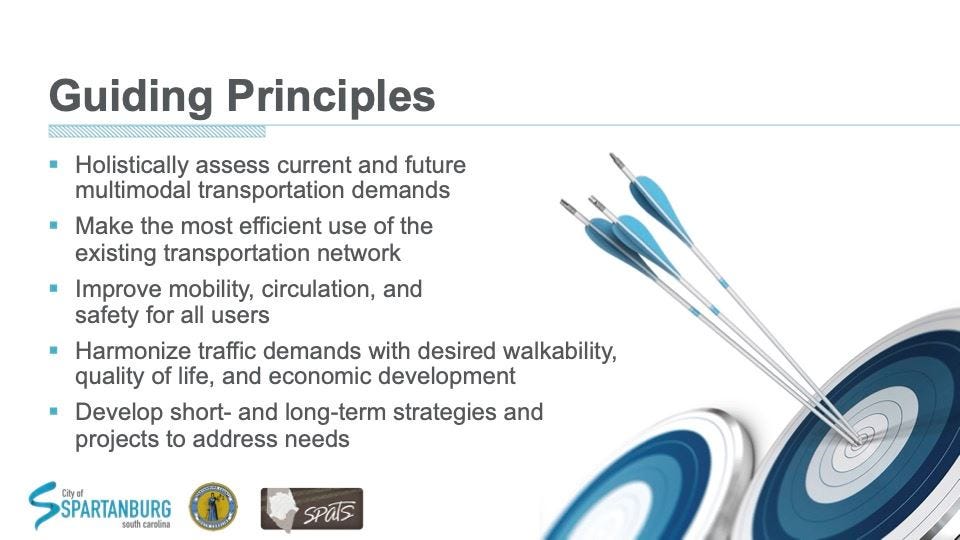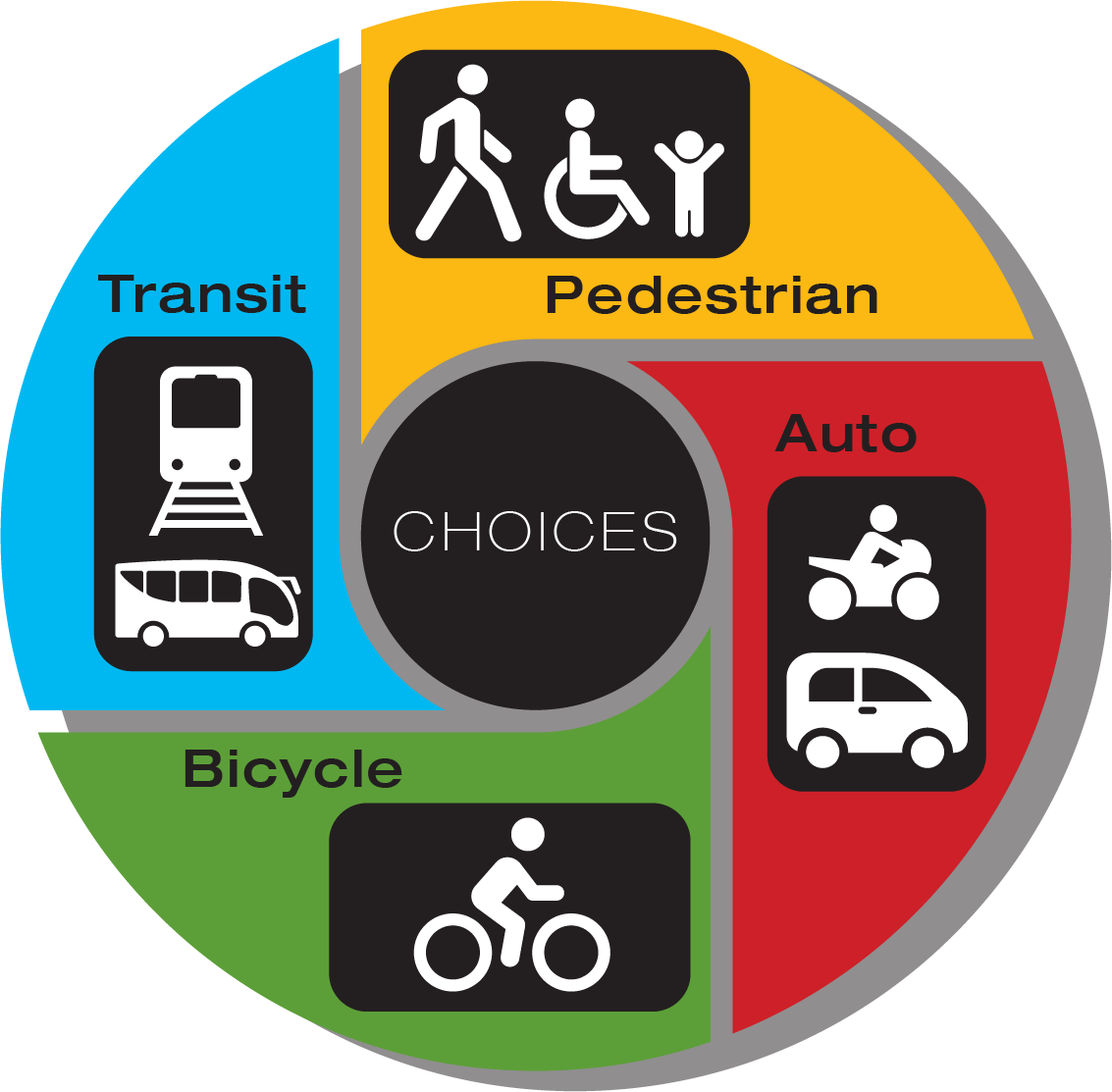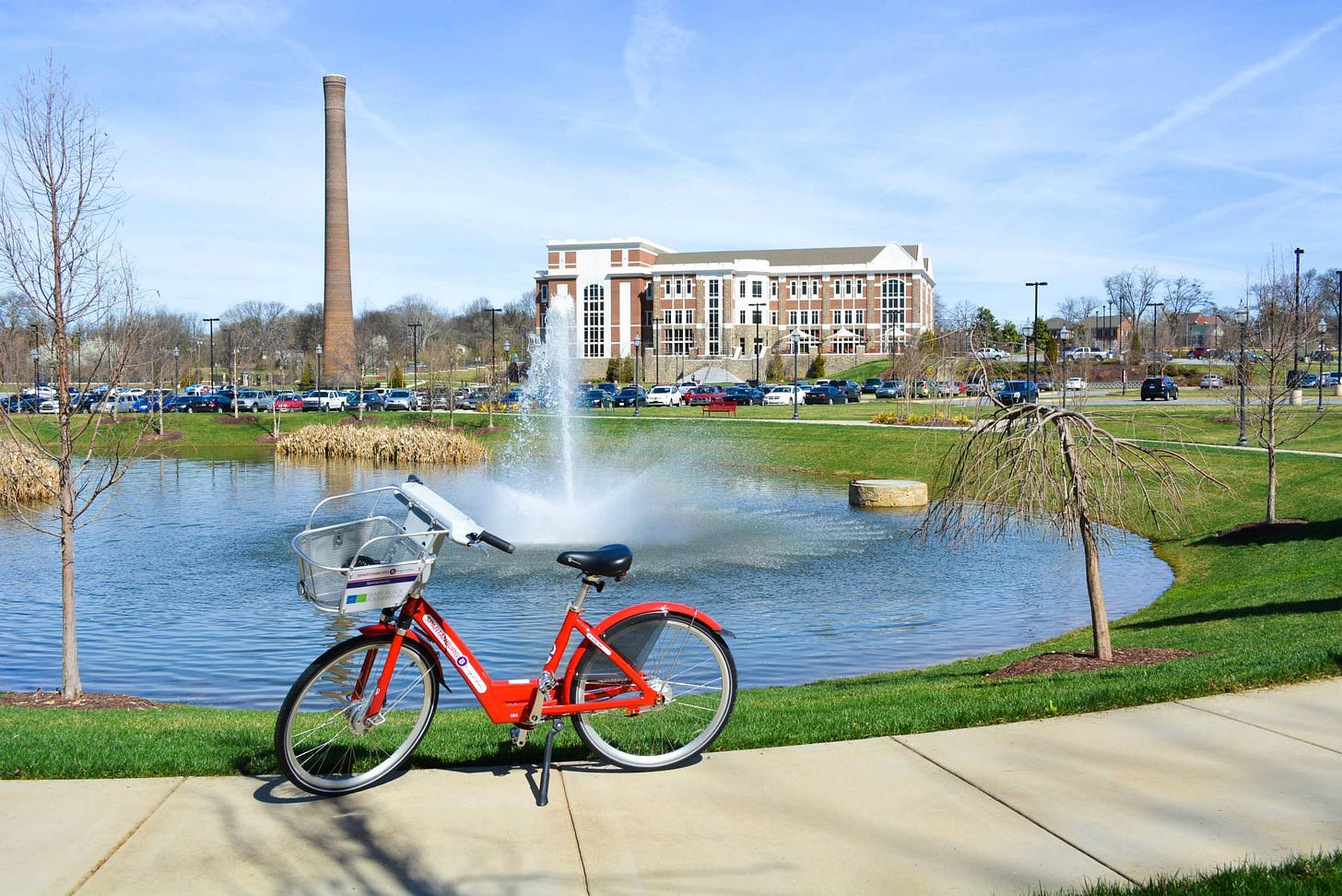At their February 12th meeting, city council heard an update on the Downtown Transportation Plan. This plan is a collaboration between the City of Spartanburg, the South Carolina Department of Transportation, Toole Design, and the Spartanburg Area Transportation Study (SPATS). The full details of this plan will likely release in April. For now, I will use this blog to go over what we know so far and to discuss what I hope is a part of this greater plan that will likely guide transportation infrastructure in our city for the foreseeable future. This plan’s study area is defined by the following borders:
Daniel Morgan Avenue to the north and west
Henry Street to the south
Pine Street to the east
I will begin by breaking down the guiding principles that were provided at the city council meeting, which will be in an image above. These guiding principles seem to be focused on current and future multimodal transportation demands, so that we can make a safer and more efficient network. To understand these principles, it is important to understand what multimodal transportation means. Multimodal transportation simply means transportation that is carried out using multiple modes of transit. These modes include driving, walking, biking, and taking public transit. Multimodal transportation provides more choices for folks and allows for routes that make commuters feel more connected to their communities.
These guiding principles state the importance of improving mobility and accessibility for all users. This is important when connected with the multimodal transportation point, as it emphasizes that our transportation network needs to work equitably even for users that are not driving. Spartanburg’s current transportation system, along with most U.S. cities, works only for those who can afford a personal automobile. We need a system that provides more choice, as it will benefit a large number of folks.
I saw a few reactions on social media to this plan that expressed the idea that Spartanburg cannot be made more walkable because of the traffic. This is partly true. Traffic is not something that will be fixed overall, and if you have ever sat in traffic then you are part of the traffic. I often cross six lane roads on my walking trips that do not seem to fix traffic. We have realized through countless studies that widening these roads do not reduce traffic. So maybe instead of adding more lanes to these monstrous oceans of asphalt, we can create multi-use paths that can accommodate walkers and strollers and wheelchairs and cyclists.
Some other key priorities brought up by city council were having a convenient bus route giving southside residents access to grocery options and traffic calming on both Pine Street and Church Street. In my community garden blog, I discussed how having better walkability and public transit on the southside can help those folks. In my blog about traffic safety, I talked about my own experiences having to cross Pine Street. So these are priorities I am glad to see discussed as they will be vital for downtown’s growth and livability.
These were some of the priorities mentioned at city council during this update, but there is sure to be more included in the final plan that we get in April. When the plan releases in full, I will report on it and pull out the highlights for y’all. For now, I want to think on things I would like to see. This section of the blog will serve as a personal wish list of mine.
The first thing I would like to see is some sort of bikeshare system. Spartanburg used to have e-scooters and e-bikes available, and both of those programs have since ceased operations. When it comes to the e-scooters, I think those end up just being a novelty that are rarely used for actual transportation. E-bikes are something that I think are much more useful and necessary. I am unsure why Spartanburg’s Bcycle system disappeared a couple of years back, but as our trail system grows e-bikes could be even more useful.
E-bikes can bridge the gaps within our current public bus routes. They can also serve as an accessibility tool for folks who want to travel by bike but cannot do so easily. There is a YouTube channel called Propel, ran by an e-bike shop owner in NYC who is a veteran. His service left him with a bad leg, but the power of an e-bike allows him to get exercise and use a bike as transportation despite his leg injury. E-bikes can allow folks of all abilities to travel further distances than they could by foot. Our trail system is growing rapidly and this would help the trails become even more effective transportation corridors.
Another thing I hope to see emphasized in this plan is the updating of sidewalks so that they are more accessible. I have hope for this since the West Main corridor improvements include ADA accessible sidewalks and crosswalks. In our city, there are far too many cracked sidewalks that are likely unusable for folks using a wheelchair or walker. I have personally seen people in wheelchairs being forced to roll on the very edge of the road since they have nowhere else to go. This is a horrible sight, especially with how dangerous our roads are.
The third, and final, thing I want to see in this new plan is something I have mentioned in many of my other blogs — an improved and reimagined bus system. I want to see our city actually investing in SPARTA so that it can be a more useful and inviting system. This means rethinking the hours of operation, how we handle fares, the routes available, and how we retain bus operators. While public transportation is a massive investment, I believe it is worth it based on other cities that have done so. Through public transportation investment, we can make the choice to take public transportation an appealing one.
Overall, I am excited to see what this plan looks like and how I can use it to further educate about and advocate for these ideas. The idea of a more walkable Spartanburg for those that come after me is exciting.
Until next time,
Liv.








